BLOG

In the rolling hills and lakeside breezes of Southwest Michigan, something special is fermenting—and it’s not just the wine. Over the past decade, this region has blossomed into a destination for wine lovers across the Midwest and beyond. But it’s not only the soil and climate that make this area unique—it’s the spirit of collaboration over competition that’s turning Southwest Michigan into a thriving hub for small, service-based businesses. 🤝 Wine Not Work Together? It’s tempting for businesses in the same industry and geographic area to view each other as rivals. After all, if someone visits your neighbor’s winery, they might not visit yours, right? Not necessarily. Many of the most successful wineries in Southwest Michigan—like Round Barn, Dablon Vineyards, Tabor Hill, Gravity, and soon to be Solasta ;) —have realized something crucial: when one winery thrives, the whole region benefits. Instead of treating each other like competitors, they’ve formed informal alliances and cooperative efforts to grow the entire wine trail. Here’s how this collaborative mindset is paying off: 🍷 1. Cross-Promotion Creates a Destination Rather than hoarding customers, many wineries actively promote each other. Take the Lake Michigan Shore Wine Trail, for example. This loosely organized trail includes more than a dozen wineries that feature each other on maps, joint marketing materials, and events. Tourists are encouraged to visit multiple wineries in a single weekend, turning what might have been a quick stop into a full-blown getaway. This benefits everyone—not just in wine sales, but for local hotels, restaurants, transportation services, and gift shops. 🧀 2. Collaborative Events Bring Bigger Crowds Events like “Wine & Wags,” “Sip & Stroll,” or “Harvest Festivals” often include several wineries working together. Some even coordinate shuttle services, joint tasting passports, or theme weekends. By pooling marketing budgets and creative energy, these small businesses can put on events that none of them could manage alone, drawing larger crowds and generating buzz far beyond the local radius. 💡 3. Shared Knowledge = Stronger Businesses Owners, tasting room managers, and staff often share resources and insights, whether it’s about: Managing crop yields during unpredictable Michigan winters Sourcing eco-friendly packaging Complying with state licensing and distribution laws Hiring seasonal staff This behind-the-scenes collaboration may not be visible to the average visitor, but it leads to a richer experience for everyone. 🚜 4. Supporting the Whole Local Economy Many wineries extend this collaborative spirit beyond their own industry. They partner with local food trucks, musicians, artisans, and farmers to host events or stock their tasting rooms. Solasta might host a local acoustic artist. Dablon might sell handmade cheese from a nearby dairy. These partnerships create a thriving ecosystem of small businesses that support and amplify one another. 🌱 Final Sip: A Lesson for All Service Businesses Southwest Michigan’s winery scene is proof that collaboration beats competition, especially for service-based businesses. Whether you run a spa, a photography studio, a dog grooming service, or a wellness clinic, there’s power in lifting each other up: Recommend complementary businesses to your clients Team up on promotions or events Share behind-the-scenes knowledge to improve your industry When small businesses band together, they don’t just survive—they create something so vibrant that people want to travel for it, talk about it, and come back again and again. Raise a glass to community over competition—Southwest Michigan already has. 🍷
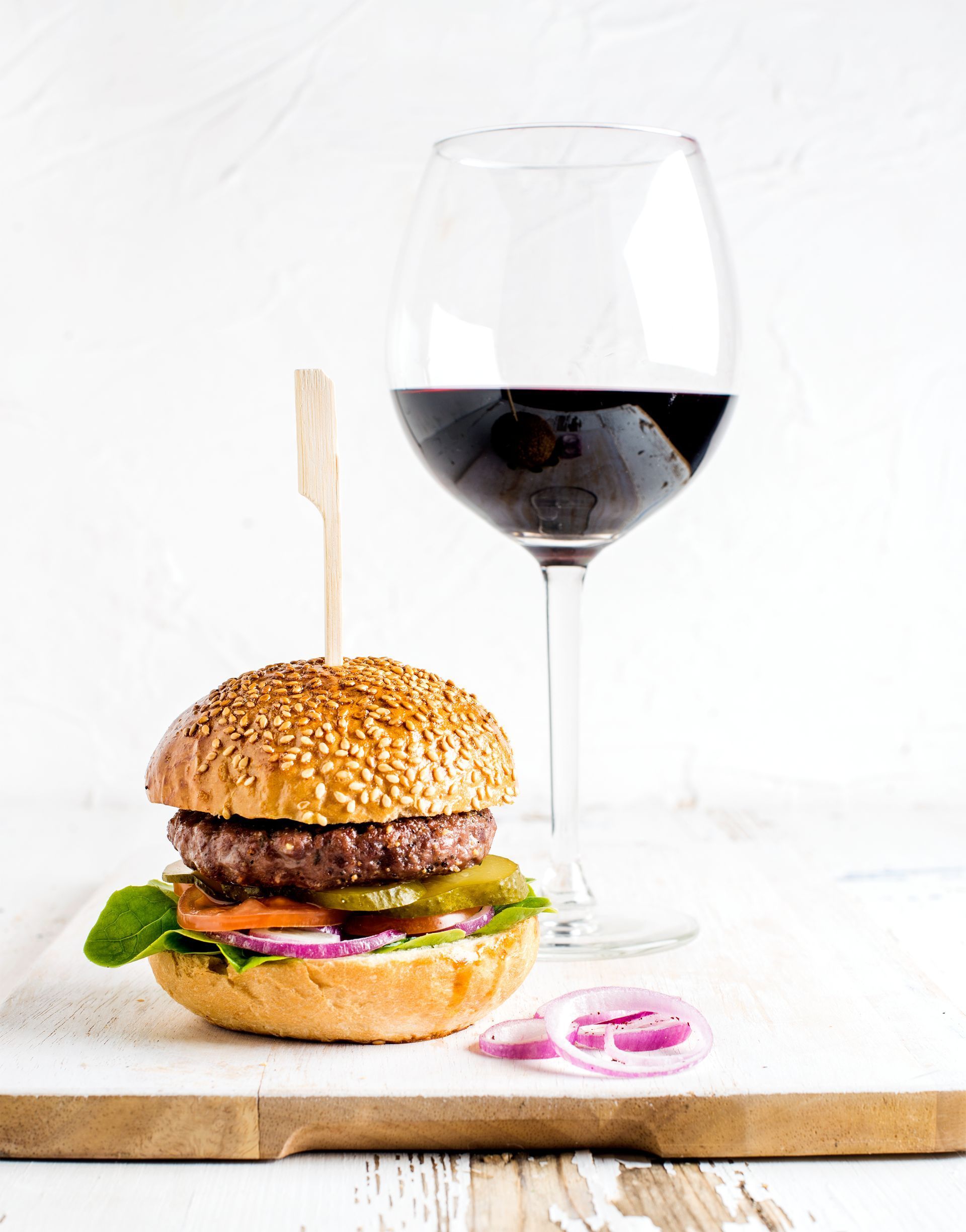
We often think of wine pairings in fine-dining terms—steak with Cabernet, oysters with Champagne, and so on. But here’s a secret: fast food and wine might be one of the most underrated pairings out there. There’s something delightfully rebellious about sipping a glass of Pinot Noir with a greasy burger or pairing bubbly with fried chicken. And guess what? When done right, the flavors truly complement each other. So grab your drive-thru favorites and pop a bottle—we're matching fast food with fine wine and having a little fun along the way. 🍟 1. French Fries + Bubbling White Why it works: The salty crunch of fries meets the high acidity and bubbles of bubbling wine for a combo that's crispy, zesty, and totally addictive. Pro Tip: A glass bubbly cuts through the oil and elevates the humble fry to something gourmet. 🍔 2. Cheeseburger + Pinot Noir Why it works: The savory meat, melty cheese, and soft bun find a friend in the light tannins and bright fruit of a Pinot Noir. It's like putting cherry jam on your burger—without the mess. Pro Tip: Have the pinot noir compliment some of your favorite sauces with this burger. 🌮 3. Tacos (Beef or Spicy Chicken) + Red Wine Blend Why it works: Our Red Wine Blend brings bold, spicy, jammy vibes that stand up to seasoned meats and hot sauce. It also adds a sweet counterbalance to heat. Try with: Classic street tacos, or even a fast-food crunchy taco supreme. 🍗 4. Fried Chicken + Bubbling Rosé Why it works: The crispy batter, salty skin, and juicy meat are practically begging for bubbles. Sparkling rosé adds red berry notes that cut through the fat without overpowering the flavor. Bonus: It looks classy, even if you're holding a KFC drumstick. 🌭 5. Hot Dog + Riesling Why it works: The sweetness and acidity of a Riesling balance out the salt and tang of mustard, relish, or ketchup. It’s funky, weird, and weirdly amazing. Bonus pairing: Add sauerkraut and see how the acidity in the Riesling harmonizes. 🍦 6. Vanilla Milkshake + Moscato Why it works: Sweet on sweet! Moscato has gentle, peachy notes that make it a dessert dream alongside a creamy milkshake. Warning: You may never go back to regular dessert again. Final Sip: Class Meets Cravings Pairing wine with fast food is about balance, contrast, and joy. You don’t need white tablecloths to enjoy great flavor combinations—sometimes all you need is a paper bag, a wine glass, and a sense of adventure. So next time you swing by your favorite drive-thru, skip the soda and pour yourself a glass of something nice. 🍷
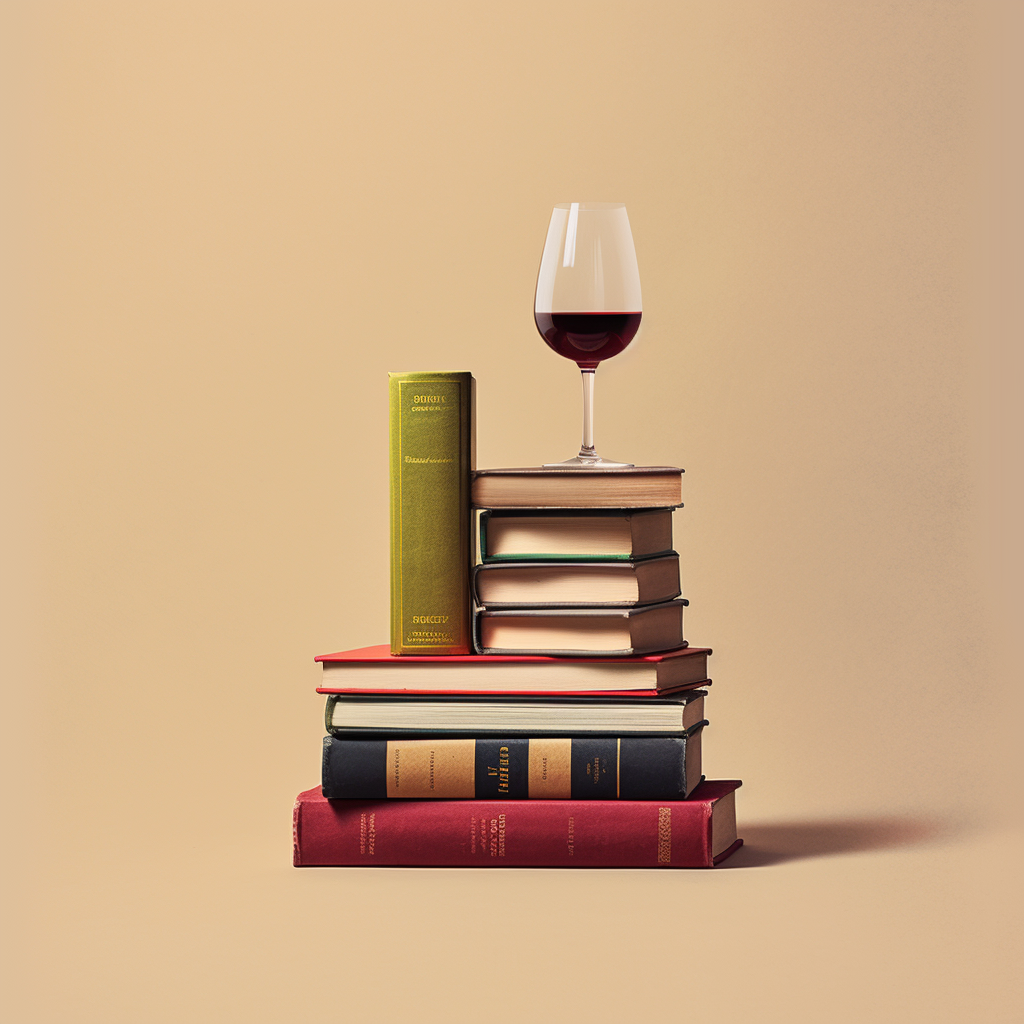
There’s something timeless about the pairing of a great glass of wine with a good book. Both are slow pleasures—meant to be savored, not rushed. Whether you’re unwinding after a long day or spending a cozy weekend afternoon on the couch, combining your favorite varietal with a compelling read can elevate the experience in unexpected ways. Today, we’re exploring perfect wine-and-book pairings based on genres, moods, and reading styles. Let the literary sommelier in you come out. 1. For the Romance Lover: Rosé & Contemporary Romance Wine Pairing: Bubbling Rosé Book Suggestion: The Seven Husbands of Evelyn Hugo by Taylor Jenkins Reid Why it works: Rosé is the wine of sun-drenched days, flirtation, and emotional nuance—perfect for love stories filled with drama, passion, and beautiful heartbreak. Light and refreshing, but never lacking depth—just like a good romance novel. 2. For the Thriller Fan: Cabernet Sauvignon & Psychological Suspense Wine Pairing: Cabernet Sauvignon Book Suggestion: Gone Girl by Gillian Flynn Why it works: A bold, full-bodied Cab matches the dark twists and turns of a thriller. This pairing heightens the intensity of every page-turning chapter and mirrors the complexity of unreliable narrators and moral ambiguity. 3. For the Historical Fiction Enthusiast: Pinot Noir & Time-Traveling Narratives Wine Pairing: Pinot Noir Book Suggestion: The Nightingale by Kristin Hannah Why it works: Delicate yet complex, Pinot Noir has layers that unfold with every sip—just like a richly woven historical tale. It suits books that transport you to another era and leave you emotionally invested in the characters' lives. 4. For the Cozy Mystery Reader: Chardonnay & Whodunits Wine Pairing: Chardonnay Book Suggestion: The Thursday Murder Club by Richard Osman Why it works: Just as cozy mysteries balance charm with clever plotting, a Chardonnay with just a touch of oak walks the line between bright and buttery. Ideal for sipping while trying to solve a fictional murder from your favorite armchair. 5. For the Nonfiction Devotee: White Wine Blend & Memoirs or Essays Wine Pairing: White Wine Blend Book Suggestion: Educated by Tara Westover Why it works: Crisp, zesty, and thought-provoking, our White Wine Blend pairs beautifully with memoirs and reflective nonfiction. Its brightness keeps you alert, curious, and ready to digest big ideas or personal stories. Wine & Reading Tips: Keep a small notebook to jot down wine notes and book quotes—make it your own “wine and words” journal. Match wine temperature to the book’s mood. Chilled for lighthearted stories, room temp for deep or heavy reads. Create themed reading nights: Italian reds + Elena Ferrante, French whites + Proust, etc. Final Pour Books and wine are both about discovery—of stories, places, people, and flavor. The next time you open a new novel, consider what wine might echo its tone or theme. You might just find that the right pairing enhances not only the taste of the wine, but the feel of the story. What’s your favorite wine and book combo? Drop it in the comments—I’m always looking for new pairings to try!
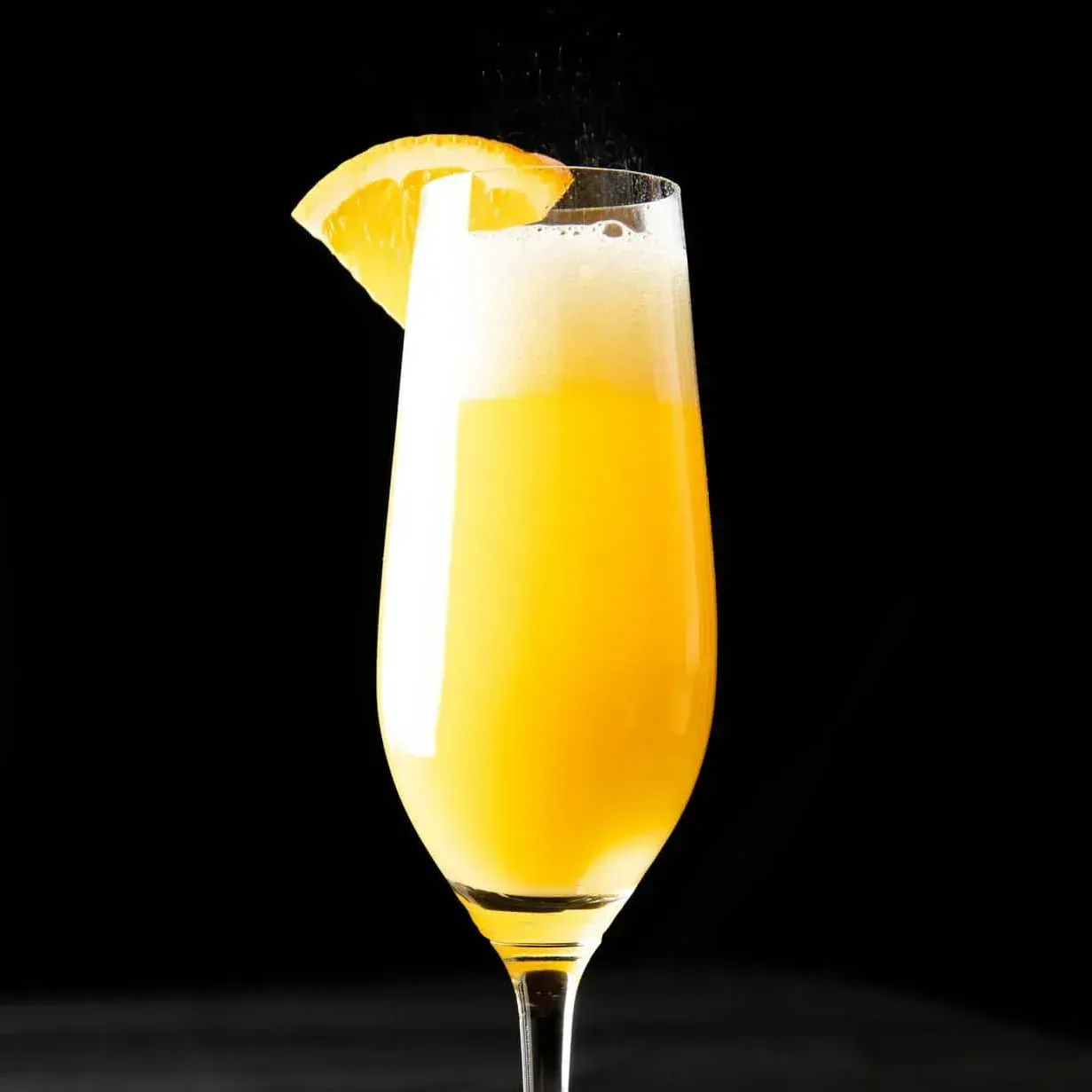
When it comes to brunch cocktails, the Mimosa reigns supreme. With its bright, bubbly personality and refreshing taste, the Mimosa has become synonymous with morning celebrations, lazy weekends, and festive brunches. But where did this iconic drink come from? Who first had the idea of mixing orange juice with champagne? Let’s take a sparkling journey through the history of the Mimosa and explore why it has become a brunch-time favorite. What is a Mimosa? Before we dive into history, let’s refresh our memory on what exactly makes a Mimosa. The drink is a simple yet elegant combination of champagne (or sparkling wine) and fresh orange juice, usually served in a flute glass. The ratio is typically about half sparkling wine and half orange juice, but many people adjust it based on personal preference. The result is a light, bubbly, and citrusy drink that pairs perfectly with breakfast or brunch. It's the drink that says, “I’m starting my day with a little luxury.” The Origins of the Mimosa The exact origin of the Mimosa is somewhat debated, but the most commonly accepted theory places its creation in Paris, France, in the 1920s. The drink is said to have been invented by a bartender at the Ritz Hotel in Paris. Legend has it that the bartender, in the spirit of innovation, decided to mix champagne with the orange juice, and voilà—the Mimosa was born. However, another story claims the drink was named after the mimosa flower, which is yellow and orange in color, much like the drink itself. The flower, a symbol of vibrancy and beauty, may have inspired the cocktail's creators. Still, we can’t be entirely sure which version is correct, but both stories are charming and add to the allure of the Mimosa. The Birth of the Mimosa Cocktail in London While Paris may have been the birthplace of the Mimosa, it was London that helped popularize the drink. In the early 20th century, London's fashionable social scene embraced the combination of bubbly and orange juice, and the Mimosa began appearing on cocktail menus at some of the city's most prestigious venues. It became the go-to drink for stylish gatherings, and it wasn’t long before the trend spread to other parts of the world. Mimosas in the United States: A Brunch Staple While the Mimosa initially gained traction in Europe, it wasn't until the 1970s that it became an undeniable part of American brunch culture. The Mimosa’s appeal was in its simplicity and its ability to provide the light, refreshing lift of a cocktail without being too heavy. Champagne's celebratory nature paired perfectly with the casual, laid-back vibes of brunch. Plus, the drink was easy to make, requiring only two ingredients: champagne and orange juice. Americans quickly adopted the Mimosa, and it became a beloved tradition at restaurants, hotels, and in people's homes. It wasn’t long before Mimosas became the go-to drink for celebrating special occasions like Mother’s Day, New Year’s Day, and even weddings. If you were gathering with friends for a mid-morning feast, a Mimosa was likely to be in hand. The Mimosa Today Fast forward to today, and the Mimosa continues to be a brunch essential across the world. It's a staple at restaurants, a go-to drink at special events, and a fun option to serve at home when hosting friends or family. Its versatility has even allowed it to evolve into many variations, like: -The Classic Mimosa: Champagne + orange juice (the original). -The Berry Mimosa: Fresh berries like strawberries or raspberries muddled with the drink, or a splash of berry juice added. -The Tropical Mimosa: A twist with pineapple juice or mango juice, bringing a fun, island-inspired twist. -The Peach Mimosa (Bellini’s cousin): Champagne paired with peach nectar or puree, offering a delicate and fruity alternative. -The Pomegranate Mimosa: A seasonal favorite with a splash of pomegranate juice, perfect for the holidays. Why We Love Mimosas So, what is it about Mimosas that have made them such a staple in modern culture? Here are just a few reasons why we love this bubbly drink: Light and Refreshing: The Mimosa is perfect for day-drinking—it's not too strong, and the citrusy notes of orange juice add a refreshing element to the drink. Social and Fun: There’s something undeniably festive about sipping on a Mimosa. Whether it’s served in a tall, elegant flute or a casual glass, Mimosas immediately elevate any gathering. Easy to Make: It’s one of the simplest cocktails to whip up, requiring minimal ingredients and a quick pour. You don’t have to be a mixologist to impress your guests with a Mimosa. Perfect for Pairing: The drink pairs wonderfully with a wide variety of breakfast or brunch foods, from savory options like eggs Benedict to sweet treats like pancakes and pastries. It’s the ultimate food-friendly cocktail. The Symbol of Celebration: The bright, golden hue of a Mimosa instantly signals that it’s time to celebrate. Whether it’s a birthday, holiday, or just a sunny Sunday, Mimosas help set the mood for good times. The Mimosa has become more than just a cocktail—it’s a tradition. Whether you’re enjoying one at a chic brunch spot or preparing it for an at-home gathering, this bubbly, citrusy drink brings joy and sophistication to the table. Though its exact origins may be shrouded in mystery, one thing’s for sure: the Mimosa is here to stay as the ultimate brunch companion. So, the next time you pour yourself a Mimosa, take a moment to toast its long, sparkling history—one that began in Paris, traveled to London, and became a timeless American favorite. Cheers to Mimosas, and may your brunch always be bright! 🍊🥂

Wine is one of the world’s oldest and most celebrated beverages, but with centuries of history comes plenty of misconceptions. Whether you're new to the world of wine or a seasoned connoisseur, you've likely encountered some wine myths that have been passed down through generations. But fear not—today, we're here to bust those myths wide open and set the record straight. Let’s debunk some of the most common (and surprising!) wine myths: 1. Red Wine Must Always Be Served at Room Temperature One of the most enduring myths is that red wine should always be served at room temperature. But here's the truth: room temperature (especially in modern homes) tends to be too warm for red wine. A good rule of thumb is to serve red wine slightly cooler than room temperature—around 60–65°F (15–18°C). Serving it too warm can make the alcohol too pronounced, overpowering the wine's delicate aromas and flavors. So, if you want your red to shine, try chilling it for 10-15 minutes in the fridge before serving. 2. The Older the Wine, the Better It Is Sure, there are some wines that improve with age, but not all wines are meant to be stored for decades. Many wines—especially lighter whites and rosés—are intended to be consumed within a few years of their release. Aging a bottle past its prime can result in a flat, oxidized, or unappetizing drink. It's best to check the wine’s aging potential before investing in a long-term cellar! Generally, if a wine is not specifically labeled as a "vintage wine" or "reserve," it’s probably ready to drink soon after purchase. 3. Wine Should Only Be Paired with Fine Dining Another myth is that wine is only appropriate for fancy dinners and expensive meals. While wine certainly enhances a gourmet meal, it can also pair beautifully with more casual fare. Whether you're having pizza, burgers, or even popcorn, there’s a wine that can complement those everyday dishes. For example, a chilled rosé can be perfect with a crisp salad, and a light red like Pinot Noir goes wonderfully with a cheeseburger. So don’t save the wine for special occasions—it's just as great with your Tuesday-night takeout! 4. Sweet Wines Are Only for Dessert Sweet wines often get a bad rap as being just for desserts or people with a "sweet tooth." However, sweet wines (like Riesling or Moscato) can be an excellent match for many dishes, not just desserts. A well-balanced sweet wine, with a touch of acidity, can pair perfectly with spicy foods, salty cheeses, or even Asian cuisine. Off-dry whites like Riesling can cool down the heat from spicy Indian or Thai dishes, while a sweet Port can add complexity when paired with blue cheese. 5. All Wine Needs a Cork to Be Good Many wine enthusiasts swear by the classic cork closure, but here's the truth: corks are not always a sign of quality. While corks have been traditionally used, today there are other great alternatives like screw caps and synthetic corks that help preserve wine just as well—if not better. In fact, wines sealed with screw caps tend to have a more consistent aging process, free from the risk of cork taint. Don’t let the closure be your deciding factor on whether a wine is high quality or not! 6. Wine Glasses Need to Be Fancy The idea that you need an expensive, oversized glass to enjoy wine is a myth. While the shape of the glass can enhance certain wines, what truly matters is that you’re drinking it in a clean, clear glass that allows you to enjoy the aroma and color. A tulip-shaped glass can help concentrate the wine’s aromas, but you don’t need to spend a fortune on crystal to have a great wine experience. The most important thing is enjoying the wine in good company, whether it’s in a fancy glass or a simple tumbler. 7. You Should Always Drink White Wine with Fish While this pairing is a classic, it’s not a hard and fast rule. There are plenty of white wines, like Chardonnay, that pair wonderfully with a rich piece of fish, but red wines can work too! Light reds like Pinot Noir can complement grilled salmon or tuna steaks. The key is to balance the wine with the weight and flavor profile of the dish—so don't be afraid to get creative. Wine is a wonderful and versatile drink, and understanding it is all part of the fun. So the next time someone shares a wine myth, you’ll be able to confidently set them straight and enjoy your glass with a bit of extra knowledge. Cheers to debunking myths and savoring wine, no matter how you enjoy it!
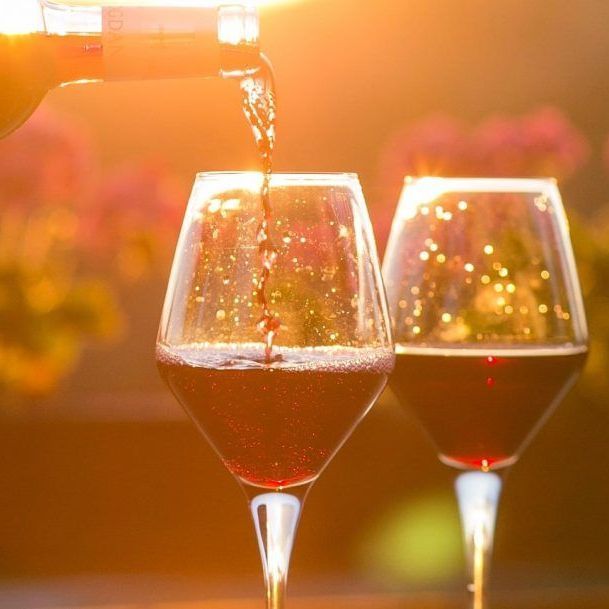
As the days grow longer and the temperatures rise, there’s no better way to cool off and enjoy the summer vibe than with a refreshing wine cocktail. Whether you’re hosting a backyard BBQ, enjoying a picnic with friends, or simply lounging by the pool, wine-based drinks can elevate any occasion. From fizzy spritzers to fruity sangria, there’s a wine cocktail for every taste. Here are some of the best wine cocktails to try this summer: 1. Classic Wine Spritzer What you need: 3 oz white wine (White Wine Blend, Pinot Grigio, or any light, dry white wine) 2 oz club soda or sparkling water Ice A lemon or lime wedge for garnish Instructions: Fill a glass with ice, then pour in your white wine. Top with club soda or sparkling water, and stir gently. Garnish with a lemon or lime wedge. This simple and refreshing drink is perfect for a hot day, and the bubbly fizz adds a lively touch to any summer gathering. Why it’s perfect for summer: The wine spritzer is light, refreshing, and not too strong, making it perfect for sipping throughout the afternoon. 2. Sangria: A Spanish Summer Classic What you need: 1 bottle of red wine (Red Wine Blend, Merlot, or Cabernet Sauvignon) 1/4 cup brandy 1/4 cup orange liqueur (Cointreau or Triple Sec) 1 orange, thinly sliced 1 apple, cored and chopped 1 cinnamon stick (optional) 1-2 cups soda water or club soda Ice Instructions: In a large pitcher or bowl, combine the wine, brandy, and orange liqueur. Add the sliced fruit (orange, lemon, apple), and stir in the cinnamon stick. Let the sangria sit in the refrigerator for at least 4 hours to let the flavors meld together. When you're ready to serve, fill glasses with ice and pour in the sangria mixture, topping with soda water or club soda for a refreshing sparkle. Why it’s perfect for summer: Sangria is the ultimate summer party drink—colorful, fruity, and easy to make in large batches. Plus, you can customize it with your favorite fruits and spices! 3. Wine Mojito What you need: 3 oz white wine (Chardonnay or White Wine Blend) 6-8 fresh mint leaves 1 oz lime juice 1 oz simple syrup (or adjust to taste) Soda water Ice Instructions: Muddle the fresh mint leaves and lime juice at the bottom of a glass. Add ice, then pour in the white wine and simple syrup. Stir gently, then top with soda water for a fizzy finish. Garnish with extra mint leaves and a lime wedge. Why it’s perfect for summer: The wine mojito combines the crisp, cool nature of white wine with the refreshing taste of mint and lime. It’s a great twist on the classic mojito—perfect for those who enjoy a lighter, more wine-forward cocktail. 4. Frosé (Frozen Rosé) What you need: 1 bottle of rosé wine (dry or semi-sweet) 1/2 cup strawberries (fresh or frozen) 2 tbsp simple syrup 1 oz lemon juice Ice Instructions: Pour the rosé wine into a baking dish or shallow pan and freeze for at least 6 hours (or overnight). Once the wine is frozen, blend it with strawberries, simple syrup, and lemon juice until smooth. If the mixture is too thick, add a little more rosé or water to reach the desired consistency. Serve in a glass with extra strawberries for garnish. Why it’s perfect for summer: Frosé is the ultimate frozen treat for wine lovers! It’s both refreshing and fun, and you can make it ahead of time for effortless serving at parties. 5. Wine Cooler (Citrusy & Simple) What you need: 3 oz white wine (Chardonnay or White Wine Blend) 1 oz orange juice 1 oz lemon juice 1/2 oz simple syrup (optional) Ice A lemon or lime wheel for garnish Instructions: Combine the white wine, orange juice, and lemon juice in a glass filled with ice. Stir gently and garnish with a lemon or lime wheel. Why it’s perfect for summer: This easy wine cooler is tangy, refreshing, and has a citrusy kick that’s perfect for warm days. The simplicity of this cocktail makes it ideal for anyone looking to whip up something quick but tasty. 6. Berry Wine Punch What you need: 2 cups red wine (Merlot) 1 cup club soda or lemon-lime soda 1/2 cup mixed berries (strawberries, blueberries, raspberries) 1/4 cup orange juice 1 tbsp honey or simple syrup (optional) Ice Instructions: In a pitcher, combine the red wine, club soda or lemon-lime soda, orange juice, and mixed berries. Stir gently to combine. If you want a sweeter punch, add honey or simple syrup to taste. Serve over ice for a chilled, refreshing drink. Why it’s perfect for summer: This berry wine punch is sweet, fruity, and fizzy—everything you need for a fun, laid-back summer drink. Wine cocktails are a fantastic way to enjoy your favorite bottles in a new and refreshing way during the hot summer months. Whether you prefer the bubbly fizz of a spritzer, the fruity allure of sangria, or the icy bliss of a frosé, these cocktails will keep you cool while adding a little extra flair to your warm-weather gatherings. Experiment with your favorite wines and fruits to create new variations, and don't forget to share your creations with friends and family—they’ll definitely be impressed! Cheers to summer, and to wine cocktails that keep us cool and refreshed all season long!

Wine tasting can feel like an art and when done properly, it's a sensory journey that enhances the entire wine experience. Whether you are a beginner or a seasoned wine lover, there's always something new to discover about the complexities of wine. But how do you take your wine tasting skills to the next level? It's all about knowing what to look for and understanding the key elements that make each wine unique. In this post, we'll walk you through the steps to taste wine like a pro, so you can appreciate every sip to its fullest. Step 1: Look - Assessing the Color The first thing to do when tasting wine is to look at it. Wine can tell you a lot just by its appearance. Hold your glass and tilt it against a white background, like a napkin or a piece of paper. red wines will range from light rub to deep purple or even brownish tones, depending on the grape variety and age. Younger red wines often have brighter, more vibrant colors, while older ones have a more brick-red hu due to oxidation white wines will range from pale yellow to golden and even amber as they age. White wines with more body or oak aging will often have a deeper golden color. Why does this matter? The color of a wine can give clues to its age, grape variety, and even its tannin content. A deep, dark red may suggest a full-bodied wine, a pale white could be light and refreshing. Step 2: Swirl - Unveiling the Aroma Next, its time to swirl. holding the base of the glass, gently swirl the wine in a circular motion. This aerates the wine, allowing its aromas to be released, which are often key to understanding its complexity. Why swirl? Swirling helps to expose the wine to oxygen, which can enhance the aromas and allow the wine to open up. As the wine hits the air, it interacts with volatile compounds, making it easier to smell the different aromas in the wine. Take a few moments to breathe in the aroma. Stick your nose into the glass and inhale deeply. The aroma is an important part of the tasting process, as your sense of smell is directly tied to your perception of taste. Fruit: Does the wine smell of ripe berries, citrus, or stone fruits? Spices: Do you detect an baking spices like cinnamon, clove, or pepper? Earth: Is there a smell of soil, mushrooms, or even wet stone? Oak: For oaked wines, you may catch whiffs of vanilla, toasted wood, or smoke. Step 3: Sip - Tasting the Wine Now it's time to taste. Take a small sip, allowing the wine to coat your mouth. The goal is to pay attention to the different components of the wine, which will reveal itself on the palate. Here are the main characteristics to evaluate: Sweetness: Does the wine taste sweet or does it lean dry? The sweetness of a wine depends on the level of residual sugar left after fermentation. Sweet wines like a late-harvest Riesling or a Moscato will have noticeable sweetness, while dry wines like Cabernet Sauvignon or Sauvignon Blanc will not. Acidity: Acidity gives a wine its fresh, crisp character and is especially noticeable in whites. High-acid wines, like Sauvignon Blanc or Pinot Noir, will leave a tingling sensation on the tongue and make your mouth water. Low-acid wines, on the other hand, tend to feel rounder and smoother. Tannin: Tannins come from the skins, seeds, and stems of the grapes. These compounds contribute to the bitterness and structure of red wines. Young red wines, like Cabernet Sauvignon, tend to have higher tannin levels, giving them a dry, puckering sensation. As red wines age, tannins soften, creating a smoother texture. Body: The body of a wine refers to its weight and mouthfeel. Is it light, medium, or full-bodied? A full-bodied wine will feel heavier in your mouth, while a light-bodied wine will feel more refreshing. Rich red wines like Syrah or Zinfandel tend to be full-bodied. while whites like Pinot Grigio are often light and crisp. Flavor Profile: What flavors do you detect? Take a moment to identify what's happening on your palate. Are the fruit flavors bold or subtle? Are there any secondary flavors, like herbs, spices, or earthy notes? The flavors you experience will often echo the aromas you detected earlier. Step 4: Finish - The Aftertaste After you swallow or spit (if you are in a tasting session), take a moment to evaluate the finish, the lingering taste left in your mouth. The finish can tell you a lot about the quality of the wine. Length: Does the flavor disappear quickly, or does it linger? A long, lingering finish often indicates a high-quality wine, while a short finish may signal a simpler wine. Complexity: Does the finish offer new flavors or a sense of balance? A well-rounded finish that evolves over time is often a sign of a carefully crafted wine. Step 5: Evaluate - Putting It All Together Now that you've looked, swirled, sipped, and experienced the finish, it's time to assess the wine as a whole. Think about how the elements come together. Balance: Does the wine feel balanced, or does one element (sweetness, acidity, tannin) dominate the others? Complexity: Did you notice multiple layers of flavor, or was the wine relatively simple? A complex wine reveals new aspects the longer you taste it. Length: How long does the wine's flavor stay with you? A longer finish often suggest a more elegant wine. Enjoyment: Finally, ask yourself: Do you enjoy the wine? Tasting wine is, at its core, about personal enjoyment. If you like the wine, that's what truly matters! Conclusion Wine tasting is more than just a simple sip, it's an experience that engages all of your senses. By learning to look, swirl, sip, and evaluate, you can begin to appreciate the intricate details that will make each wine unique. So, the next time you pour a glass, take your time and savor the journey. Whether you're at home, in a tasting room, or in a dining restaurant, these simple steps will elevate your wine experience and help you appreciate wine on a whole new level. Happy tasting!!

1. Stranger Things Wine Pairing: Bold Red (Cabernet Sauvignon) Why it Works: Much like the characters of Hawkins, this wine is full of depth and character. The dark, rich notes of a bold red mirror the mystery and intensity of the show. Plus, it's a good wine to sip on as you get immersed in the strange, otherworldly plot twists. It’s a wine that keeps you engaged, just like the show. Fun Pairing Tip: Open this bottle during a binge-watch session to sip through the suspenseful moments—just don’t let it go to your head when you see a Demogorgon! 2. Bridgerton Wine Pairing: Sparkling Wine (Prosecco or Champagne) Why it Works: Bridgerton is full of glamour, romance, and drama, and sparkling wine is the perfect fit for a show that’s all about high society and extravagant balls. The bubbles represent the effervescent charm of the Regency era, while the lightness of the wine will keep things fun as you enjoy all the love triangles and shocking plot twists. Fun Pairing Tip: Make sure to pop the cork in style, perhaps with a dramatic “for the queen!” toast before diving into the latest gossip. 3. The Office (U.S.) Wine Pairing: Chardonnay (Light & Crisp) Why it Works: The Office is easy to watch, lighthearted, and just plain fun. A crisp Chardonnay is a crowd-pleaser that’s versatile enough for a variety of moments—whether you’re laughing at Michael Scott’s antics or having a quiet moment with Jim and Pam. The wine has the right balance of flavor without overwhelming the senses, just like the humor in The Office. Fun Pairing Tip: Serve it chilled, so you can sip it during a laugh-out-loud scene without missing a beat (and of course, make sure you’re ready for all the awkward moments). 4. Narcos Wine Pairing: Cabernet Sauvignon (Full-bodied Red) Why it Works: Narcos is intense, dramatic, and full of dark intrigue, much like the robust, rich flavors of a Malbec. The boldness of a cabernet will match the show’s gritty intensity as you dive deep into the drug world and the power struggles at play. Plus, it’s a wine that pairs well with strong flavors and a complex narrative, just like the show. Fun Pairing Tip: Keep this one for after dinner or when you want something a little more serious (but still indulgent) while watching a thrilling crime drama. 5. The Great British Bake Off Wine Pairing: Rosé (Light & Fresh) Why it Works: The Great British Bake Off is warm, comforting, and full of colorful personalities and delightful moments. A fresh, light rosé is the perfect match for this feel-good, visually appealing show. It’s not too heavy, but still packs a lot of flavor—just like the array of delicious bakes featured in each episode. It’s the ideal wine for snacking and indulging while watching contestants try to bake their way to victory. Fun Pairing Tip: Sip the rosé while enjoying a baked good yourself (perhaps some scones or a fruity tart?) to get in the mood! 6. Friends Wine Pairing: Pinot Noir (Smooth and Easy-Going) Why it Works: Friends is a classic, easy-to-watch series that’s filled with laughs, romance, and relatable moments. Pinot Noir is smooth, approachable, and perfect for a relaxed hangout with your favorite pals. It’s light enough to sip while you’re watching episodes back-to-back, and it complements the show’s warm, comforting vibe. Fun Pairing Tip: Enjoy this wine with a side of pizza or even a bowl of Monica’s “Fat-Free” lasagna—just don’t spill anything on your clothes like Ross did during Thanksgiving dinner!
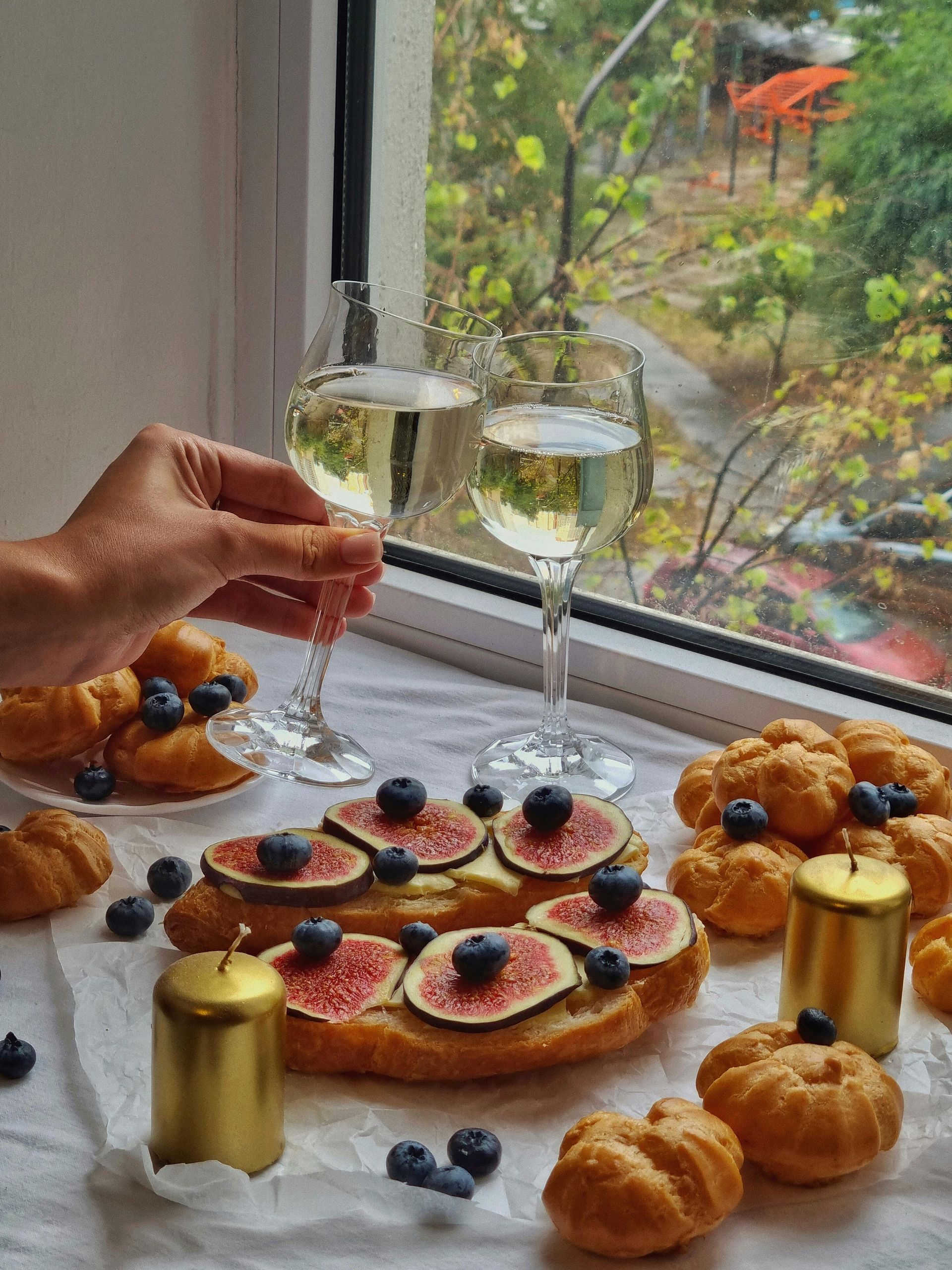
A Perfectly Curated Evening: Wine Pairings and Recipes for a Memorable Meal When it comes to creating a memorable dining experience, nothing elevates the occasion quite like pairing the right wine with the right dish. This blog features three delicious wine and food pairings, each crafted to enhance and complement your evening. From a refreshing salad to a mouthwatering main course, let's dive into the world of Traminette, Bubbly Rosé, and Pinot Noir wines, each perfectly paired with mouthwatering dishes. 1. Traminette Wine Paired with Strawberry, Almond, and Goat Cheese Salad Wine Pairing: Traminette Dish: Strawberry, Almond, and Goat Cheese Salad Why It Works: Traminette, with its floral aromas and crisp acidity, is a delightful white wine with fruity and slightly spicy notes. The fresh strawberries in the salad mirror the wine’s fruitiness, while the creamy goat cheese adds a layer of richness. The almonds provide a touch of crunch, offering a perfect balance to the light sweetness of the wine. Recipe: Two plates of salad with strawberries and nuts Ingredients: 4 cups mixed greens (arugula, spinach, or a spring mix) 1 cup fresh strawberries, sliced 1/4 cup toasted almonds, slivered 1/4 cup crumbled goat cheese 2 tbsp balsamic glaze 1 tbsp olive oil Salt and pepper to taste Instructions: In a large salad bowl, combine the mixed greens and sliced strawberries. Add the toasted almonds and crumbled goat cheese on top. Drizzle with olive oil and balsamic glaze, and toss gently to combine. Season with salt and pepper to taste. Serve immediately alongside a chilled glass of Traminette. Perfect Pairing Tip: For an extra touch of elegance, serve the salad in individual bowls or on a platter. This light and refreshing salad is the perfect starter to begin your wine-pairing journey. 2. Bubbly Rosé Paired with Spicy Honey Lime Shrimp Wine Pairing: Bubbly Rosé Dish: Spicy Honey Lime Shrimp Why It Works: The crisp effervescence of Bubbly Rosé complements the heat of the spicy shrimp while its fruity undertones enhance the honey and lime glaze. This pairing balances sweetness with spice, offering an exciting contrast that dances on the palate. Recipe: Ingredients: 1 lb large shrimp, peeled and deveined 1 tbsp olive oil 2 tbsp honey 1 tbsp fresh lime juice 1 tsp chili flakes (adjust to your spice preference) 1 garlic clove, minced Salt and pepper to taste Fresh cilantro, chopped (for garnish) Instructions: In a small bowl, combine honey, lime juice, chili flakes, and garlic. Stir until well combined. Heat olive oil in a pan over medium heat. Add the shrimp to the pan and sauté for 2-3 minutes on each side until cooked through. Pour the honey-lime sauce over the shrimp and cook for an additional 1-2 minutes, allowing the sauce to thicken and coat the shrimp. Season with salt and pepper to taste. Garnish with freshly chopped cilantro and serve immediately with a glass of chilled Bubbly Rosé. Perfect Pairing Tip: The bubbles in Bubbly Rosé will help cut through the richness of the honey while offering a crisp contrast to the spicy elements of the shrimp. This dish is perfect as an appetizer or light main course. 3. Pinot Noir Paired with Lamb Chops in Mint Sauce Wine Pairing: Pinot Noir Dish: Lamb Chops in Mint Sauce Why It Works: Pinot Noir, with its elegant and earthy notes, is the perfect pairing for lamb. The wine’s delicate tannins and bright red fruit flavors complement the rich, savory flavors of lamb, while the mint sauce adds a refreshing touch. The pairing balances the intensity of the lamb with the subtlety of the wine. Recipe: Ingredients 8 lamb chops 2 tbsp olive oil Salt and pepper to taste 1/2 cup fresh mint leaves, finely chopped 2 tbsp sugar 1/4 cup white wine vinegar 1/4 cup water 1 tbsp lemon juice Instructions Preheat your grill or skillet over medium-high heat. Rub the lamb chops with olive oil and season generously with salt and pepper. Grill the lamb chops for about 3-4 minutes on each side for medium-rare, or adjust to your preferred doneness. While the lamb chops are cooking, prepare the mint sauce: In a small saucepan, combine the mint leaves, sugar, white wine vinegar, water, and lemon juice. Bring to a simmer and cook for about 2-3 minutes until the sauce slightly thickens. Once the lamb chops are cooked, drizzle with the mint sauce and serve alongside a glass of Pinot Noir. Perfect Pairing Tip: The earthy, subtle tannins of Pinot Noir are a beautiful match for the richness of the lamb, and the mint sauce adds a burst of fresh, herbaceous flavor. Serve with roasted vegetables or a side of mashed potatoes for a complete and indulgent meal. Final Thoughts With each of these thoughtfully curated pairings, you'll create an unforgettable dining experience. From the fresh and bright start with Traminette and a strawberry almond salad to the zesty heat of Bubbly Rosé with spicy shrimp, and culminating in the rich, savory delight of lamb chops with Pinot Noir—every bite and sip will work in perfect harmony. Whether you're hosting a dinner party, celebrating a special occasion, or enjoying a quiet evening, these pairings are designed to make any meal feel extraordinary. Cheers to great food, exceptional wine, and the joy of pairing them perfectly!
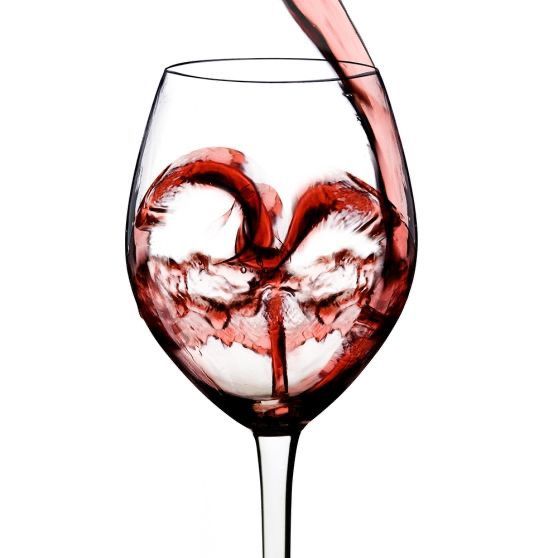
Red Wine Is often associated with beauty benefits due to its antioxidant-rich properties. Here's how it may contribute to beauty: Anti-Aging Effects • Resveratrol, a powerful antioxidant in red wine, helps combat free radicals, which can damage skin cells and accelerate aging. It promotes collagen production, leading to smoother, firmer skin. • Regular but moderate wine consumption may improve skin elasticity and reduce wrinkles. Skin Glow • The polyphenols in wine help improve blood circulation, giving your skin a natural, healthy glow. • Applying red wine topically (in masks or facials) can exfoliate the skin and remove dead cells, resulting in brighter skin. Fights Acne • The antimicrobial properties of wine can help fight bacteria that cause acne when applied topically. • Its anti-inflammatory effects may also reduce redness and swelling associated with breakouts. Improves Hair Health • Red wine improves blood circulation to the scalp, which may stimulate hair growth and prevent hair loss. • The flavonoids in wine protect hair from oxidative stress, making it shinier and healthier. Detoxifies the Skin • Red wine contains natural AHAs (alpha hydroxy acids), which help cleanse the skin by removing impurities and toxins when used in skincare routines. DIY Beauty Tip: Red Wine Mask Mix 2 tablespoons of red wine with yogurt and honey for a nourishing face mask. Apply, leave for 15 minutes, and rinse for smooth, glowing skin. White Wine While often overshadowed by red wine in terms of health benefits, has its own unique advantages when consumed in moderation. Here are some of its notable health benefits: Rich in Antioxidants • White wine contains antioxidants like quercetin and catechins, which help fight free radicals, reducing oxidative stress and promoting cellular health. • Although it has fewer antioxidants than red wine, it still provides a significant boost to the immune system. Heart Health • Moderate consumption of white wine has been linked to improved cardiovascular health, as it may reduce "bad" LDL cholesterol and increase "good" HDL cholesterol. • It can also improve blood vessel function, lowering the risk of heart disease. Supports Lung Function • Studies suggest that white wine may have a protective effect on lung tissues, improving overall lung health. Weight Management • White wine is typically lower in calories compared to red wine, making it a lighter option for those looking to enjoy wine while managing their weight. Bone Health • Certain compounds in white wine may help improve bone density and reduce the risk of osteoporosis, especially in postmenopausal women. Cognitive Benefits • Moderate consumption of white wine may help maintain brain function as you age, reducing the risk of dementia and cognitive decline. Skin Health • The antioxidants in white wine can help improve skin texture and protect against sun damage by neutralizing harmful free radicals. Moderation is Key • Excessive alcohol consumption can dehydrate your skin and lead to inflammation, so wine's beauty benefits are best enjoyed in moderation.